Pet Birds – The Ultimate Guide to Keeping, Caring for & Breeding
Bringing a bird into your home is more than adopting a pet—it’s welcoming a vibrant, intelligent, and often vocal companion into your life. Whether you’re drawn to the chatter of parrots, the cheerful songs of canaries, or the elegance of finches, this comprehensive guide covers everything you need to know to keep your feathered friends healthy and happy.
Pet birds offer unique companionship that differs significantly from traditional pets like cats and dogs. These intelligent creatures can live for decades, form strong bonds with their owners, and provide endless entertainment with their personalities and behaviors. However, successful bird ownership requires dedication, knowledge, and proper preparation.
Table of Contents
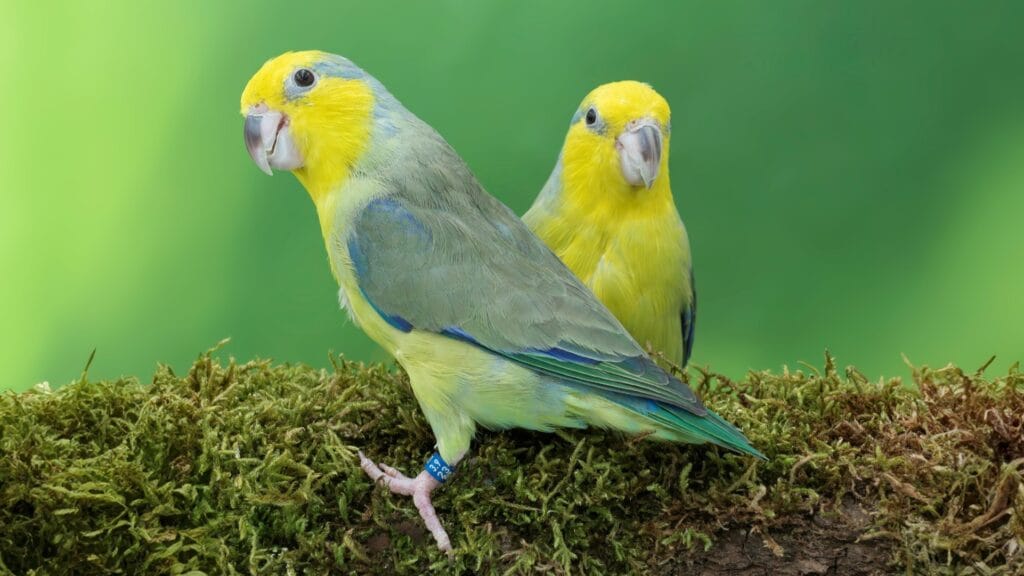
1. Before You Buy: Is Pet Bird Ownership Right for You?
Key Questions Every Prospective Bird Owner Must Ask
Before diving into the world of pet birds, honest self-assessment is crucial. Bird ownership represents a significant long-term commitment that shouldn’t be taken lightly.
Do you have the time and space for daily care? Pet birds require consistent daily attention, including feeding, cage cleaning, social interaction, and health monitoring. Even small birds like budgerigars need at least 2-3 hours of interaction daily to remain mentally healthy and well-socialized.
Can you provide a stable, clean environment? Birds are extremely sensitive to environmental changes, toxins, and poor air quality. Your home must be bird-proofed, free from harmful fumes (like those from non-stick cookware), and maintained at appropriate temperatures.
Are you ready for the long lifespan of many bird species? While budgerigars and canaries may live 8-12 years, larger parrots can live 20-80 years depending on the species. Some macaws and cockatoos outlive their original owners, requiring provisions for their continued care.
Where to Source Your Pet Birds Responsibly
Reputable breeders represent the gold standard for acquiring healthy, well-socialized pet birds. Quality breeders provide health guarantees, proper documentation, and ongoing support for new owners. They should welcome questions and allow you to visit their facilities.
Avian rescues offer wonderful opportunities to provide homes for birds in need. Many rescued birds are already socialized and may come with valuable behavioral training. Rescue organizations typically screen potential adopters carefully and provide detailed histories when available.
Specialized pet stores with knowledgeable staff can be good sources, but research their reputation carefully. The best stores maintain clean facilities, quarantine new arrivals, and demonstrate expertise in bird care.
How to Identify Healthy Pet Birds
Physical indicators of health include bright, clear eyes without discharge, smooth feathers that lay flat against the body, and clean vent areas without fecal staining. Healthy birds maintain alert postures and respond appropriately to environmental stimuli.
Behavioral signs of wellness encompass active movement, curiosity about surroundings, and species-appropriate vocalizations. Healthy birds eat regularly and show interest in food. Avoid birds that appear lethargic, sit fluffed up constantly, or show signs of labored breathing.
2. Choosing the Right Species
Small Birds: Perfect for Beginners
Finches represent ideal choices for those seeking beautiful, low-maintenance companions. These small, active birds thrive in pairs or small groups, providing endless entertainment through their social interactions. Zebra finches stand out as the most adaptable and hardy species, while Gouldian finches are living jewels with brilliant plumage featuring vibrant reds, purples, yellows, and greens. The appeal of finches lies in their natural behaviors rather than direct interaction—their soft chirping creates a soothing soundtrack while their active social lives provide constant visual interest.
Canaries have been selectively bred for over 400 years, resulting in numerous varieties prized for their songs, colors, or unique physical characteristics. Male canaries are particularly valued for their melodious songs, especially during breeding season when their vocal performances reach peak complexity. These birds make excellent single pets, bonding with their owners through daily care routines and gentle interaction, though they typically don’t enjoy extensive handling.
Budgerigars (budgies) represent the most popular pet bird worldwide, combining relatively easy care with engaging personalities and remarkable learning abilities. These small, colorful parrots can learn to mimic words and sounds, making them excellent introductory parrots for those interested in talking birds. Their social nature means budgies thrive with companionship, whether from other budgies or dedicated human interaction.
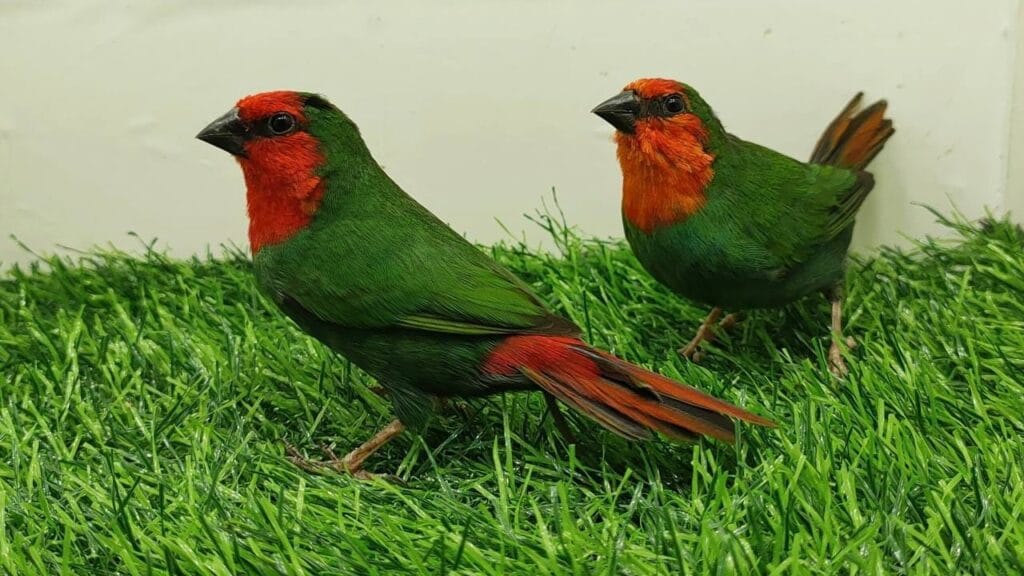
Medium-Sized Companions
Cockatiels charm owners with their distinctive head crests and gentle personalities. These Australian natives are known for their affectionate nature and ability to learn simple tunes and words. Males are typically more vocal than females, often whistling elaborate songs and attempting to mimic household sounds. The expressive crest feathers communicate the bird’s emotional state—raised when excited or alert, flattened when frightened or aggressive.
Lovebirds pack enormous personalities into compact bodies, displaying fearless attitudes and playful behaviors that keep owners entertained for hours. Despite their name, lovebirds don’t necessarily require partners and can thrive as single pets with adequate human interaction. However, their strong beaks and escape-artist tendencies require secure housing and appropriate outlets for their destructive instincts.
Conures represent diverse parrot species known for their outgoing, playful personalities. While sun conures dazzle with brilliant plumage, they’re among the loudest birds, making them unsuitable for apartment living. Green-cheeked conures offer similar personality with reduced noise levels, making them excellent family pets that thrive on training, games, and puzzle-solving activities.
Red-rumped Parakeets (Psephotus haematonotus) are Australian natives that make exceptional pets for those seeking a quieter alternative to traditional parrots. Males display stunning emerald-green plumage with distinctive bright red patches on their lower backs and rumps, while females sport more subdued olive-green coloring with subtle blue highlights on their wings. These medium-sized parakeets are significantly quieter than most parrot species, making them ideal for apartment living or noise-sensitive environments.
What sets Red-rumped Parakeets apart is their gentle, calm temperament combined with remarkable intelligence. They’re naturally curious and can learn to mimic sounds and simple words, though they’re not as vocal as traditional talking parrots. Their ground-foraging instincts make them fascinating to observe as they explore their environment, and they particularly enjoy digging through substrate or foraging materials. These birds are generally less demanding than larger parrots but still require daily interaction and mental stimulation to thrive. They can be kept as single pets with adequate human companionship or in pairs, though bonded pairs may be less focused on human interaction.
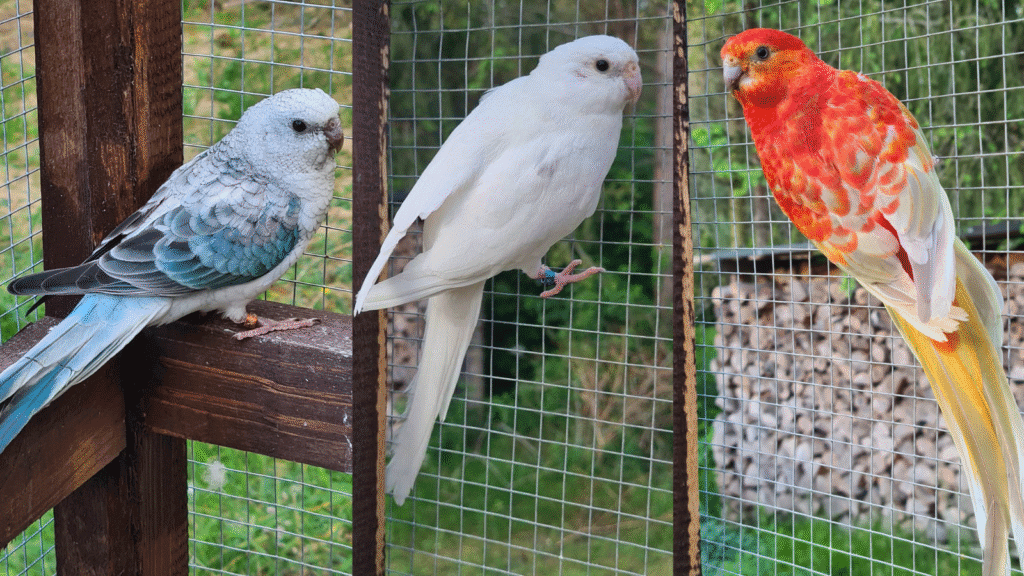
Large Parrots: The Ultimate Commitment
Large parrots represent the pinnacle of bird ownership, requiring experienced handlers who can provide consistent daily interaction, mental stimulation, and long-term commitment spanning several decades. African Grey Parrots showcase remarkable intelligence, capable of learning extensive vocabularies and engaging in contextual conversations. Amazon parrots offer robust personalities and excellent talking abilities, while cockatoos form intense bonds with their owners, often becoming “velcro birds” that demand constant attention.
Macaws represent the ultimate commitment in bird ownership, with lifespans often exceeding 50 years and space requirements that challenge most home environments. These magnificent birds require extensive socialization, mental stimulation, and specialized care that goes far beyond typical pet ownership.
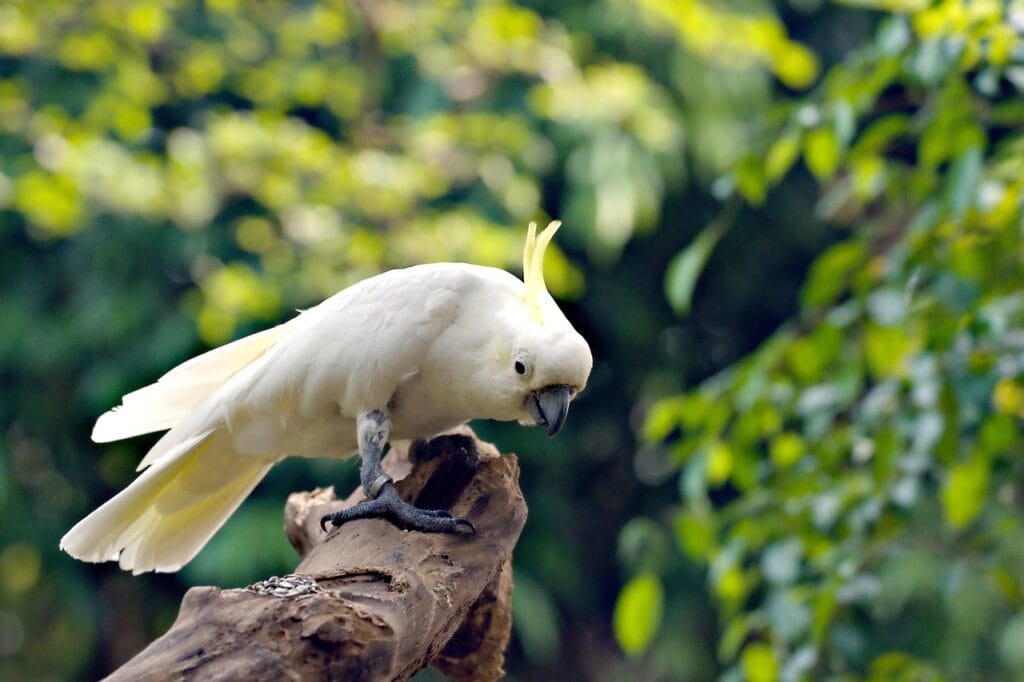
3. Setting Up the Ideal Housing for Pet Birds
Cage vs. Aviary: Making the Right Choice
Cages work ideally for one or two pet birds and fit well in most home environments. Modern bird cages come in various sizes and configurations, with horizontal space being more important than height for most species. The minimum cage size should allow birds to fully spread their wings without touching the sides.
Aviaries provide superior environments for multiple birds and species that require extensive flight exercise. Walk-in aviaries allow owners to interact naturally with their birds while providing maximum freedom of movement.
Indoor vs. Outdoor Housing Considerations
Temperature control becomes critical regardless of housing choice. Most pet birds thrive in temperatures between 65-80°F (18-27°C), with consistent humidity levels between 50-60%. Avoid drafts, direct sunlight for extended periods, and areas near heating or cooling vents.
Safety from predators must be considered for outdoor aviaries. Double-wire construction, secure roofing, and proper foundation work prevent access by cats, hawks, snakes, and other potential threats. Indoor housing eliminates these concerns but requires adequate ventilation and lighting.
Essential Components of Any Bird Home
Perches of varying sizes and textures promote foot health and provide environmental enrichment. Natural wood branches from safe species like apple, birch, or manzanita offer the best foot exercise. Avoid sandpaper perches, which can cause abrasions.
Feeding and watering stations should be positioned away from perches to prevent contamination from droppings. Stainless steel or ceramic bowls are easiest to clean and most hygienic. Multiple feeding stations prevent competition in multi-bird setups.
Nest boxes serve dual purposes for breeding birds and comfort for non-breeding birds. Even birds not intended for breeding often appreciate having a secure, enclosed space for privacy and security.
Lighting Requirements for Pet Birds
Natural lighting provides the best spectrum for bird health, supporting proper vitamin D synthesis and natural circadian rhythms. Position cages near windows when possible, but ensure birds can access shaded areas when needed.
UV lighting becomes necessary for indoor birds with limited natural light exposure. Full-spectrum UV bulbs designed for birds should be replaced regularly according to manufacturer recommendations, as their effectiveness diminishes over time.
Maintenance and Cleaning Protocols
Daily cleaning tasks include removing uneaten food, changing water, and spot-cleaning visible waste. Removable tray systems make daily maintenance more manageable and hygienic.
Weekly deep cleaning involves disinfecting all surfaces, washing perches and toys, and replacing cage liners completely. Use bird-safe cleaning products only, as many household cleaners can be toxic to birds.
4. Feeding Your Pet Birds: Nutrition Essentials
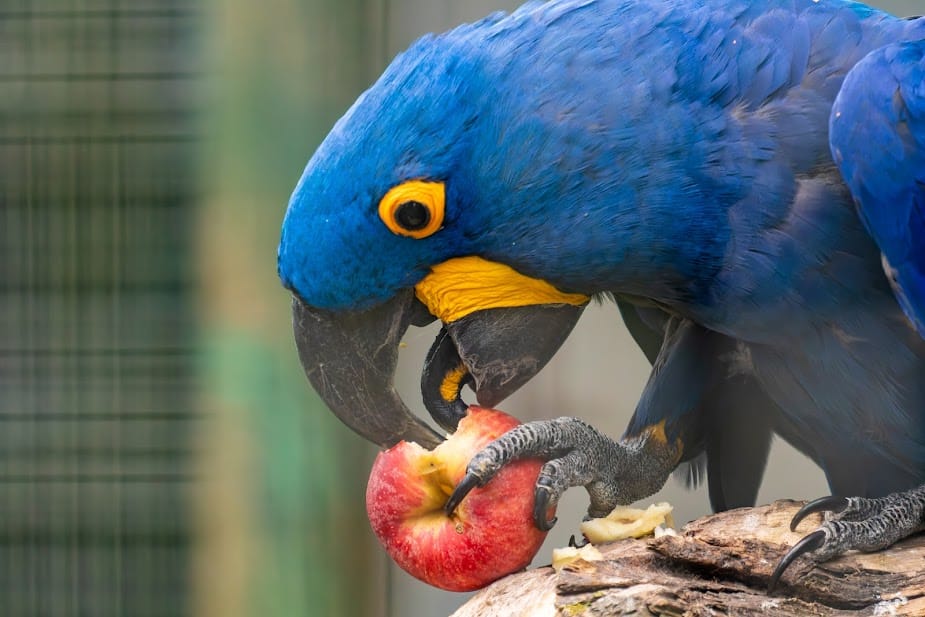
Core Diet Components for Optimal Health
High-quality pellets should form the foundation of most pet bird diets, comprising 60-80% of daily food intake. Pellets provide balanced nutrition and prevent selective eating behaviors common with all-seed diets. Choose pellets appropriate for your bird’s size and species.
Seeds serve as supplements rather than staples in modern bird nutrition. While some species require higher seed percentages, most pet birds benefit from limited seed quantities. Offer variety through millet, safflower, and small amounts of sunflower seeds.
Homemade food preparation can supplement commercial diets effectively. Cooked quinoa, brown rice, and whole grain pasta provide excellent nutrition. Sprouted seeds offer enhanced protein and vitamin content compared to dry seeds.
Fresh Food Additions for Nutritional Variety
Leafy greens provide essential vitamins and should be offered daily when possible. Dark greens like kale, collard greens, and dandelion leaves offer superior nutrition compared to lighter lettuces. Wash all greens thoroughly before serving.
Root vegetables add color and nutrients to pet bird diets. Carrots, sweet potatoes, and beets can be served raw or lightly cooked. These vegetables provide beta-carotene, which supports immune function and feather quality.
Fruits should be offered in moderation due to their high sugar content. Safe options include berries, apples (seeds removed), and melons. Avoid avocado, chocolate, caffeine, and fruit pits, which are toxic to birds.
Sprouted seeds and legumes provide exceptional nutrition and enrichment. Mung beans, lentils, and various seeds can be sprouted at home, offering fresh nutrition year-round.
Supplements and Special Dietary Needs
Cuttlefish bone provides essential calcium for egg-laying females and growing birds. This natural source of calcium helps prevent egg-binding and supports bone development.
Mineral blocks and grit requirements vary by species. Seed-eating birds may benefit from appropriate grit to aid digestion, while others don’t require it. Consult species-specific guidelines for your particular birds.
Water Requirements and Quality
Fresh, clean water must be available constantly for all pet birds. Change water daily, and more frequently in hot weather or if birds bathe in their water dishes. Some birds prefer shallow dishes for drinking and deeper ones for bathing.
Water quality considerations include using filtered water in areas with heavily chlorinated or poor-quality tap water. Avoid distilled water long-term, as it lacks beneficial minerals.
5. Daily and Long-Term Care of Pet Birds
Daily Care Routines for Healthy Birds
Morning routines should include checking your birds for any obvious health issues, providing fresh food and water, and offering initial social interaction. Many birds are most active and vocal in the morning, making this an ideal time for bonding activities.
Food and water maintenance requires replacing both daily, even if containers appear unused. Bacteria can multiply rapidly in bird environments, especially in warm weather or humid conditions.
Social interaction and mental stimulation prevent behavioral problems and strengthen human-bird bonds. Even five-minute training sessions can provide significant mental exercise for intelligent species.
Weekly Care and Maintenance Tasks
Comprehensive cage cleaning includes disinfecting all surfaces, washing perches and toys thoroughly, and replacing substrate completely. This deeper cleaning prevents bacterial buildup and parasite infestations.
Toy and perch inspection identifies wear patterns that could create safety hazards. Replace frayed rope toys, splintered perches, or any accessories showing significant deterioration.
Behavioral observation and interaction during weekly care sessions helps identify subtle changes in personality or activity levels that might indicate health issues.
Monthly Health Assessments
Physical examination basics that owners can perform include checking for changes in weight, feather condition, and overall body condition. Establish baseline measurements when birds are healthy for comparison purposes.
Environmental enrichment rotation prevents boredom and maintains interest in toys and activities. Introduce new items gradually, as some birds are initially suspicious of changes.
Record keeping helps track long-term health patterns and provides valuable information for veterinary consultations when needed.
Seasonal Care Adjustments
Lighting and temperature modifications may be necessary as seasons change. Indoor birds especially benefit from adjusted lighting schedules that mimic natural seasonal patterns.
Molting season support includes providing high-quality nutrition and minimizing stress during feather replacement periods. Some species require increased protein during molting.
Breeding season management involves recognizing hormonal changes and managing breeding behaviors appropriately, whether encouraging or discouraging reproductive activities.
6. Breeding Pet Birds: A Responsible Approach
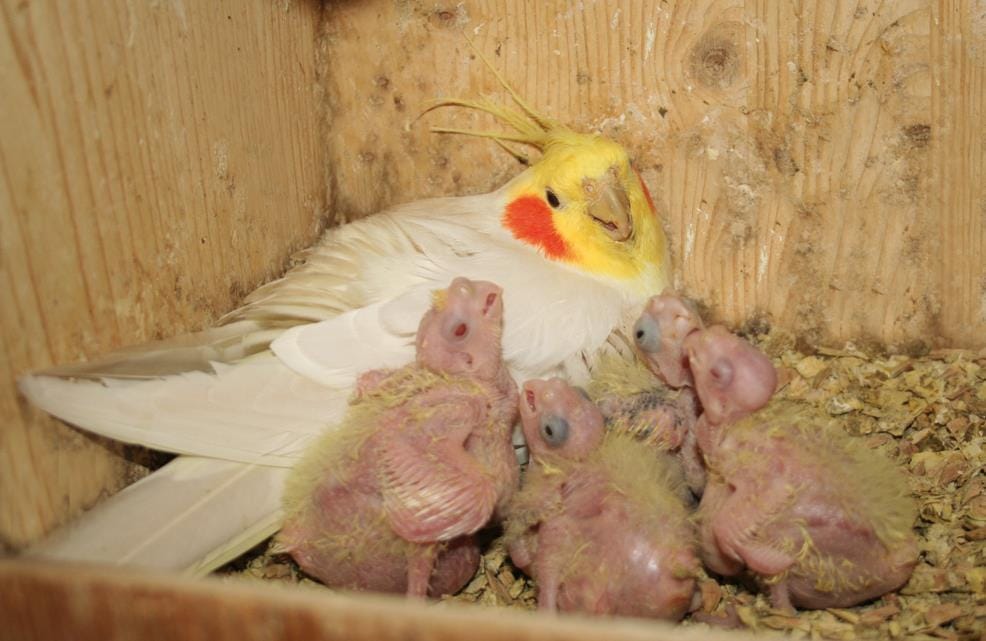
Pre-Breeding Considerations and Ethics
Health screening ensures breeding success and prevents passing genetic defects to offspring. Both potential parents should receive complete veterinary examinations and genetic testing when available for their species.
Legal and ethical responsibilities include understanding local regulations regarding bird breeding and sales. Some species require special permits, and ethical breeders prioritize bird welfare over profit.
Space and resource requirements for breeding operations exceed those for pet keeping. Breeding birds need additional privacy, specialized diets, and separate housing arrangements.
Pairing and Mating Behaviors
Natural mate selection produces better results than forced pairings. When possible, allow birds to choose their own partners from a group of compatible individuals.
Courtship behaviors vary significantly between species. Understanding normal breeding behaviors helps identify successful pairs and potential problems during the breeding process.
Breeding environment setup requires quiet, secure areas where pairs can bond without disturbance. Provide appropriate nesting materials and minimize human interference during courtship.
Nest Setup and Egg Management
Proper nest box construction varies by species but generally includes appropriate entrance hole sizes, adequate internal space, and proper ventilation. Natural materials like wood shavings work better than synthetic alternatives.
Egg incubation periods range from 14-28 days depending on species size and type. Some birds share incubation duties, while others designate specific roles to male and female partners.
Monitoring without interference requires observation skills and restraint. Excessive checking can cause nest abandonment, but some monitoring ensures early problem detection.
Hand-Rearing and Chick Development
Hand-feeding requirements include specialized equipment, proper formulas, and precise feeding schedules. This intensive process requires significant time commitment and expertise.
Socialization during development affects chicks’ future behavior and bonding abilities. Properly socialized hand-fed birds often make better pets but require extensive daily interaction.
Weaning processes must be gradual and individualized. Rushing weaning can create behavioral problems and feeding difficulties later in life.
Record Keeping and Documentation
Breeding records should include parentage information, hatch dates, and health observations. This documentation proves valuable for future breeding decisions and health tracking.
Sales documentation includes health certificates, care instructions, and ongoing support information for new owners.
7. Understanding Pet Bird Behavior and Communication

Body Language and Physical Cues
Feather positioning communicates various emotional states. Fluffed feathers might indicate contentment and relaxation when birds are settled, but constant fluffing combined with lethargy suggests illness.
Tail movements and head positions provide additional behavioral information. Tail fanning can indicate excitement or aggression, while head tilting often shows curiosity or attention.
Wing positions and movements vary from species to species but generally indicate energy levels and emotional states. Wing flapping might signal excitement, exercise needs, or territorial behaviors.
Vocalization Patterns and Meanings
Species-specific vocalizations include natural calls, songs, and communication sounds that serve different purposes in wild environments. Understanding these helps interpret pet bird needs and moods.
Learned vocalizations in captive birds often include mimicked sounds, words, or household noises. Some species excel at mimicry, while others focus on musical or rhythmic sounds.
Alarm calls and distress signals require immediate attention from owners. Sudden silence can be as concerning as excessive noise, potentially indicating fear or illness.
Social Behaviors and Interaction Needs
Flock mentality affects how different species interact with humans and other birds. Some birds require constant companionship, while others appreciate solitude.
Bonding behaviors include preening, feeding, and close physical proximity. Understanding these helps owners provide appropriate social interaction and recognize strong bonds.
Territorial and aggressive behaviors need proper management to prevent injury and stress. Identifying triggers helps modify environments and interactions accordingly.
Mental Stimulation and Enrichment
Cognitive abilities vary significantly between species, with some birds demonstrating problem-solving skills comparable to young children. Appropriate mental challenges prevent boredom and behavioral problems.
Foraging opportunities simulate natural behaviors and provide excellent mental exercise. Hide food in various locations or use puzzle feeders to encourage natural searching behaviors.
Training and trick learning offers mental stimulation while strengthening human-bird bonds. Positive reinforcement techniques work best for most species.
8. Health and Disease Prevention for Pet Birds
Recognizing Signs of Illness in Pet Birds
Early warning signs often appear subtle initially but progress rapidly in birds. Changes in appetite, activity levels, or normal routines warrant immediate attention and possible veterinary consultation.
Respiratory symptoms including labored breathing, tail bobbing while breathing, or nasal discharge indicate serious health concerns requiring immediate veterinary care.
Digestive issues manifest through changes in droppings consistency, color, or frequency. Normal droppings vary by species and diet, making baseline knowledge essential for health monitoring.
Preventive Health Measures
Quarantine protocols for new birds prevent disease transmission to existing flocks. Maintain new birds separately for 30-45 days with veterinary monitoring before introducing them to other birds.
Environmental hygiene includes regular cleaning schedules, proper food storage, and maintaining appropriate temperature and humidity levels to prevent bacterial and fungal growth.
Stress reduction techniques support immune function and overall health. Consistent routines, appropriate social interaction, and secure environments minimize stress-related health problems.
Common Diseases and Health Issues
Psittacosis (Parrot Fever) represents a serious zoonotic disease transmissible to humans. Symptoms include respiratory distress, lethargy, and green-colored droppings. Immediate veterinary care is essential.
Psittacine Beak and Feather Disease (PBFD) affects the immune system and feather development. This viral disease has no cure but can be managed with supportive care and stress reduction.
Nutritional deficiencies cause various health problems including poor feather quality, reproductive issues, and increased susceptibility to infections. Balanced diets prevent most nutritional diseases.
Parasitic infections including mites, lice, and internal parasites require prompt treatment. Regular veterinary checkups help identify parasites before they cause serious health problems.
Basic First Aid and Emergency Care
First aid supplies should include styptic powder for bleeding nails or beaks, small towels for restraint, and contact information for avian veterinarians and emergency clinics.
Emergency situations requiring immediate veterinary care include bleeding that doesn’t stop quickly, difficulty breathing, seizures, or any trauma from accidents or attacks.
When to call professionals includes any situation where you’re uncertain about your bird’s health or safety. Avian veterinarians prefer cautious owners who seek advice early rather than waiting for problems to worsen.
Finding and Working with Avian Veterinarians
Locating qualified avian vets requires research, as not all veterinarians have extensive bird experience. Avian specialty practices offer the best care for pet birds.
Establishing relationships before emergencies occur ensures better care when problems arise. Regular wellness visits help veterinarians understand your birds’ normal baselines.
Preparing for veterinary visits includes bringing samples of normal droppings, detailed health histories, and lists of any recent changes in behavior or environment.
9. Traveling and Vacation Planning with Pet Birds
Preparation for Travel with Birds
Travel carrier selection requires consideration of size, ventilation, and security features. Carriers should allow birds to perch naturally while preventing escape during transport.
Stress reduction techniques for travel include bringing familiar items like favorite perches or toys, maintaining consistent feeding schedules, and minimizing exposure to extreme temperatures.
Legal requirements for transporting birds vary by location and species. Some birds require health certificates or permits for interstate travel, and international travel has additional restrictions.
Finding Reliable Pet Care Services
Professional pet sitters with bird experience offer the best care when owners travel. Interview potential sitters thoroughly and provide detailed care instructions and emergency contacts.
Boarding facilities specializing in birds provide professional care but may stress some birds due to unfamiliar environments and proximity to other birds.
Friend and family care works well when caregivers receive proper instruction and have realistic expectations about bird care requirements.
Emergency Planning and Preparations

Emergency kits should include several days’ worth of food, medications, and first aid supplies. Keep emergency contact information easily accessible for pet sitters.
Evacuation procedures for natural disasters or emergencies should include bird-specific plans. Practice evacuation procedures periodically to ensure smooth execution when needed.
Communication plans help pet sitters reach owners or veterinarians when questions or emergencies arise during travel periods.
10. Final Tips and Resources for Pet Bird Owners
Quick Checklist for New Bird Owners
Essential equipment includes an appropriately sized cage or aviary, variety of perches, food and water dishes, high-quality pellets and seeds, and a selection of safe toys for mental stimulation.
Veterinary relationships should be established before bringing birds home. Locate qualified avian veterinarians and schedule initial wellness visits for new birds.
Educational resources help new owners learn about species-specific needs and general bird care principles. Reliable sources include avian veterinary associations, established bird clubs, and species-specific organizations.
Building Long-Term Success
Consistent routines help birds feel secure and make care management easier for owners. Establish feeding times, cleaning schedules, and interaction periods that can be maintained long-term.
Continuing education keeps owners informed about advances in bird care, nutrition, and health management. Attend bird shows, join clubs, and read current literature regularly.
Community involvement through bird clubs and online forums provides ongoing support and friendship with other bird enthusiasts who share similar interests and challenges.
Recommended Resources for Continued Learning
Professional organizations like the Association of Avian Veterinarians provide reliable health information and help locate qualified veterinary care.
Species-specific organizations offer detailed information about particular types of birds, including breeding programs, health issues, and behavioral characteristics.
Educational publications include magazines, books, and online resources that provide current information about bird care, training, and health management.
Local bird clubs and societies provide opportunities for hands-on learning, networking with experienced owners, and participating in conservation efforts.
Conclusion: Your Rewarding Journey with Pet Birds Awaits
Embarking on the journey of pet birds ownership opens the door to decades of companionship, learning, and joy. From the cheerful songs of canaries to the intelligent conversations of African Grey parrots, pet birds offer unique relationships that enrich our lives in ways no other companion animal can match. The comprehensive knowledge you’ve gained through this guide provides the foundation for creating thriving environments where both you and your feathered friends can flourish.
Success with pet birds requires dedication, patience, and continuous learning, but the rewards far exceed the effort invested. Whether you choose small finches that fill your home with gentle melodies or large parrots that become lifelong conversation partners, responsible pet birds care creates bonds that span decades. The daily routines of feeding, cleaning, and interaction become meaningful rituals that strengthen these special relationships.
Remember that pet birds are not just pets—they’re intelligent, emotional beings capable of complex relationships and behaviors. By providing proper nutrition, appropriate housing, regular veterinary care, and abundant social interaction, you ensure your pet birds live healthy, fulfilling lives. The preventive care strategies and behavioral insights covered in this guide help you recognize and address potential issues before they become serious problems.
The world of pet birds is vast and continually evolving, with new research enhancing our understanding of avian needs and behaviors. Stay connected with fellow bird enthusiasts, maintain relationships with qualified avian veterinarians, and continue expanding your knowledge through reputable resources. Your commitment to excellence in pet birds care contributes to the broader conservation efforts that protect these magnificent creatures in the wild.
As you begin or continue your pet birds journey, remember that every day offers opportunities to deepen your understanding and strengthen your bond with these remarkable companions. The investment you make in proper care, housing, and attention creates a foundation for years of mutual enrichment and joy with your pet birds.
FAQ
How long do pet birds typically live?
Lifespan varies dramatically by species. Small birds like budgerigars and canaries live 8-12 years, medium birds like cockatiels live 15-25 years, while large parrots can live 50-80 years. Proper diet, veterinary care, and environment significantly impact longevity.
What’s the best beginner bird species?
Cockatiels, budgerigars, and canaries make excellent first birds due to their manageable size, relatively simple care needs, and gentle temperaments. These species are forgiving of minor care mistakes while still providing rewarding companionship.
How much daily time do pet birds require?
Most pet birds need 2-4 hours of social interaction daily, including feeding, cage maintenance, and bonding activities. Larger, more intelligent species require more attention, while smaller birds may be content with shorter but consistent interaction periods.
Can pet birds be left alone for extended periods?
Birds should not be left alone for more than 8-10 hours regularly. For longer absences, arrange for daily visits from knowledgeable pet sitters. Some birds develop separation anxiety and behavioral problems when left alone frequently for extended periods.ome where your birds can thrive—not just survive.
Did you enjoy this article?
Help other pet lovers benefit too — Share it on social media! 🐾💚
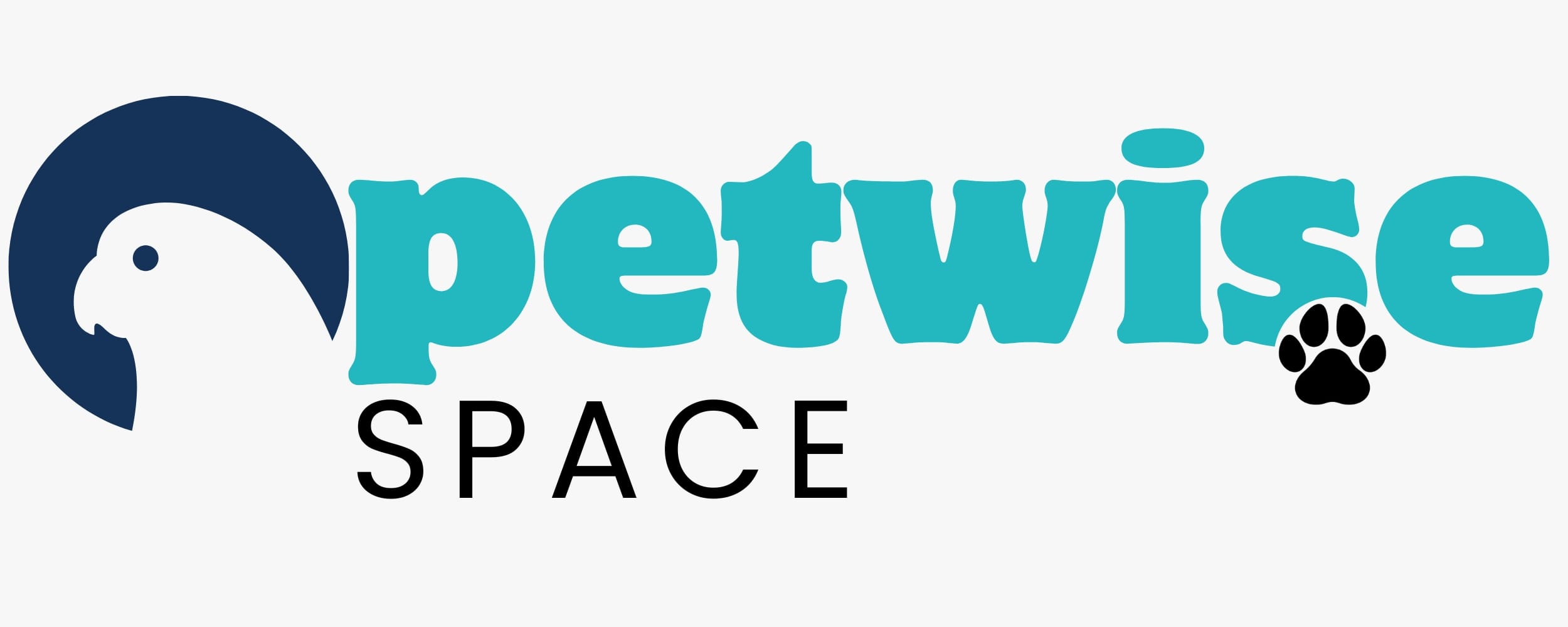
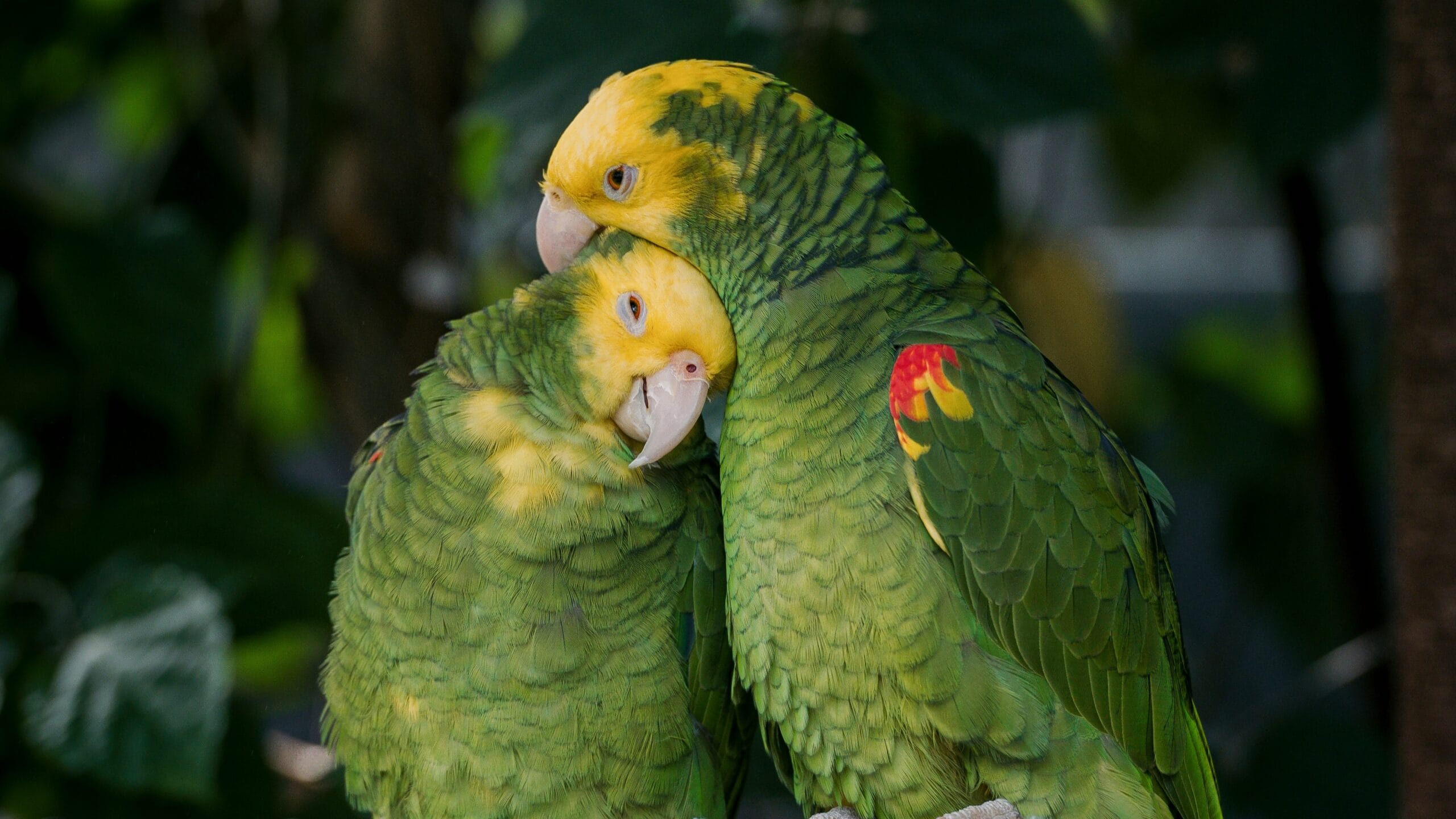
Leave a Reply